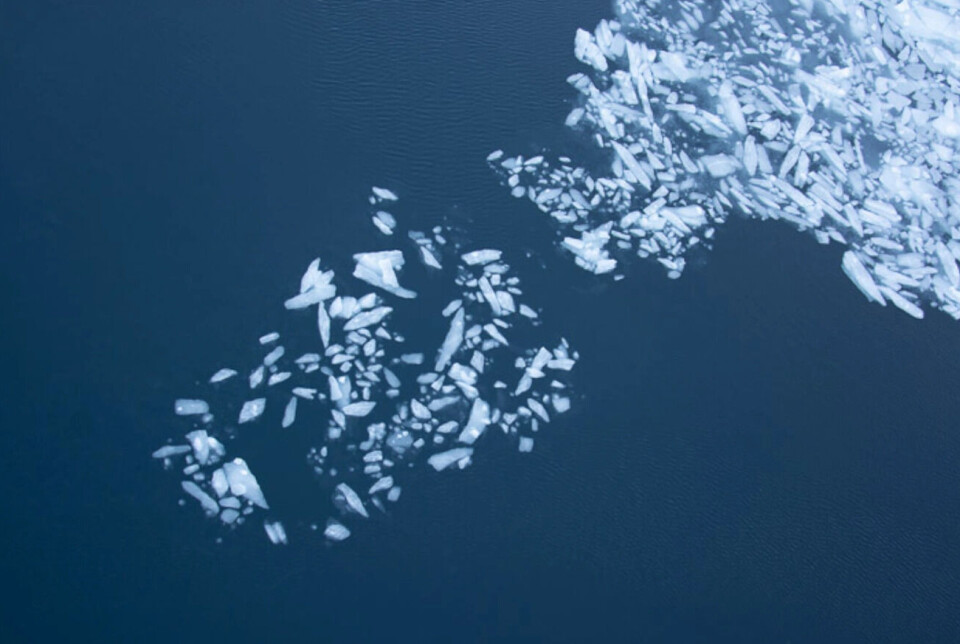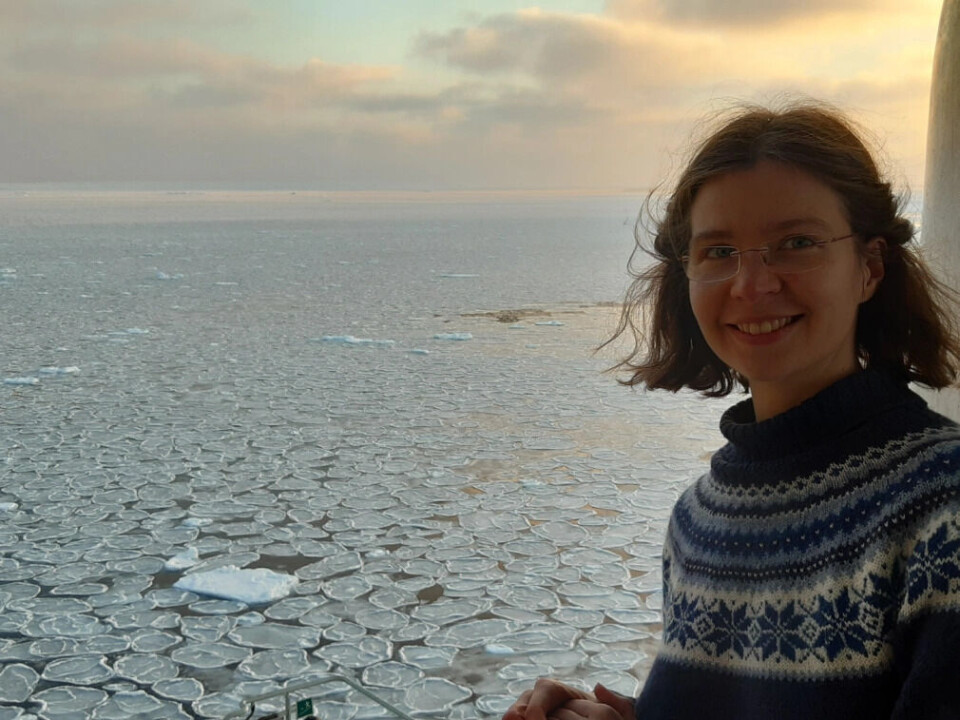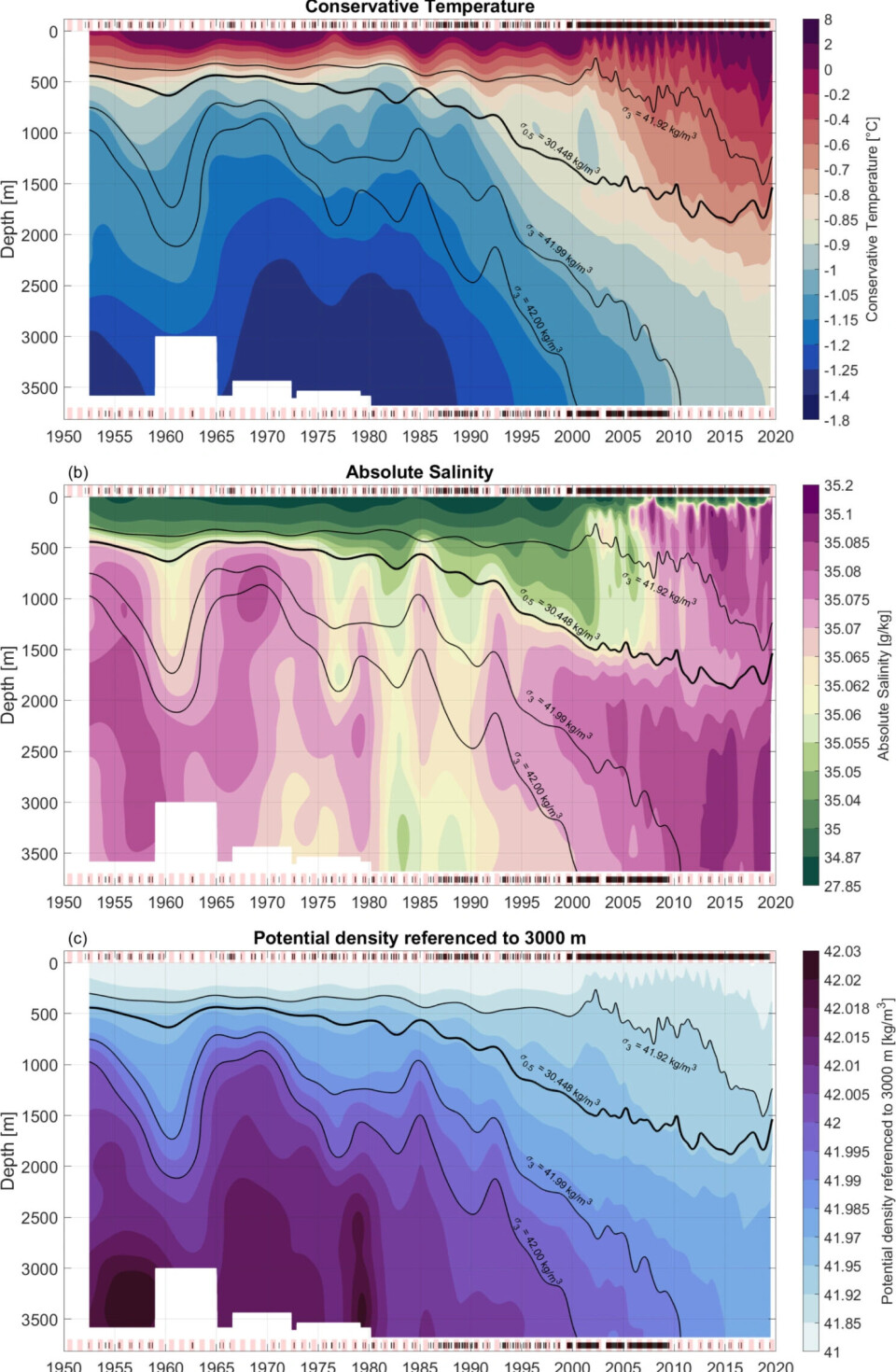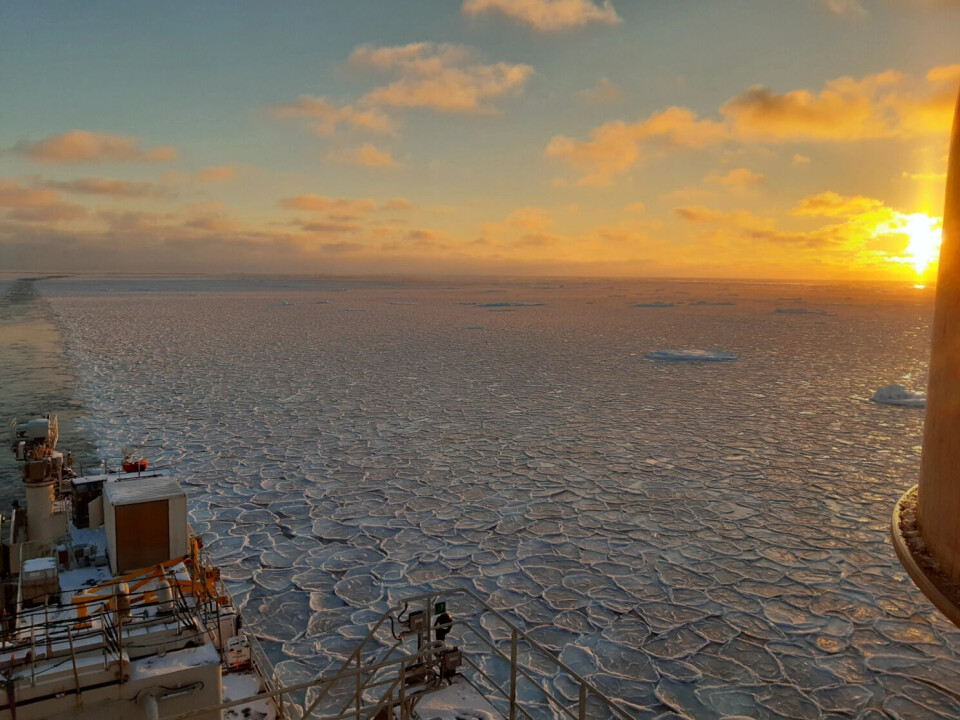THIS CONTENT IS BROUGHT TO YOU BY the University of Bergen - read more
Dramatic changes in the Greenland Sea
Due to climate change, deep water production has changed fundamentally in the Northern Hemisphere. This has major consequences for ocean circulation and the ocean's ability to absorb carbon.

Since the 1980s, something has changed in the Greenland Sea. Previously, it produced dense deep water that sank all the way to the ocean floor, more than 3 kilometres down. This water was the densest in the Nordic Seas and covered the ocean floor in all deep basins.
This process no longer occurs in the Greenland Sea.

“Instead of producing dense deep water, meaning water with very high density, less dense water is now formed in the Greenland Sea – water that is significantly lighter,” explains Anna-Maria Strehl.
She is a researcher at the University of Bergen and the Bjerknes Centre for Climate Research. She recently completed a PhD in which she studied changes in the Greenland Sea over the past 70 years.
“Because the water was so deep, it couldn’t flow over the relatively shallow Greenland-Scotland Ridge and therefore did not contribute to the AMOC. But today, the situation has changed dramatically,” she says.
AMOC, or the Atlantic Meridional Overturning Circulation, refers to the ocean currents in the Atlantic, including the Gulf Stream. It is thanks to this circulation that Norway has a relatively mild climate.
A new layered ocean
Before the change, the Greenland Sea's salt content controlled how the water separated into layers, known as stratification. However, since the 1980s, this has changed. Stratification in the Greenland Sea is now primarily controlled by temperature.
The salt content in the Greenland Sea has increased, raising the water's density. However, despite the higher salt content, ongoing warming has maintained a layer of lighter intermediate water above the deeper layers.
“In the 1990s, there was a large influx of freshwater into the Greenland Sea. A layer of lighter water formed on top like a lid, trapping the dense, deep water in a basin on the ocean floor, with a lighter water mass in the upper 2,000 metres,” explains Strehl.
As a result, the Greenland Sea became highly stratified, and the deepest layers are no longer replaced with new water.

A new contributor to AMOC
Before the 1980s, the Greenland Sea was largely isolated from the Atlantic currents and did not contribute to AMOC. The water was simply too dense to flow over the Greenland-Scotland Ridge and was confined to the Nordic Seas. The new intermediate water, however, is light enough to pass over.
“Deep ocean currents are primarily driven by density differences," explains Strehl.
Changes in density, therefore, have major consequences for both overturning and circulation.
The ocean has two types of movements: a horizontal movement that creates circulation in the ocean currents, and a vertical movement that causes overturning between the various layers of the ocean. Overturning in the Greenland Sea has become shallower and no longer reaches the ocean floor.
(Video: Bjerknes Centre for Climate Research / YouTube)
“We no longer have deep water renewal in the Nordic Seas. But on the positive side, the Greenland Sea is now contributing to the overturning circulation in the North Atlantic,” says Strehl.
No longer storing carbon
These new changes have both positive and negative consequences for the ocean and the global climate. On one hand, the Atlantic Ocean circulation has gained a new and important contributor.
At the same time, the same processes that once created deep water also helped store large amounts of carbon in the ocean.

“The carbon storage capacity in the Greenland Sea has significantly decreased,” says Strehl.
The activity that once helped store CO2 deep in the ocean has ceased, and yet another carbon sink has disappeared from the ocean.
Without the overturning of deep water, there is also no renewal of oxygen on the ocean floor, meaning any life in the deep water has not received fresh oxygen since the 1980s.
“If there's life that deep, it hasn’t received new oxygen in the past 40 years,” says Strehl.
But it is difficult to determine what impact this has had on deep-sea ecosystems.
Researching the Greenland Sea
The changes in deep water overturning in the Greenland Sea represent a major shift in the region’s oceanography. The transition from deep water production to intermediate water has important consequences for ocean currents and climate dynamics in the North Atlantic.
Strehl believes research in this area is crucial for understanding the consequences of these changes.
In March, she went on an expedition in the Greenland Sea as part of the ROVER research project to observe density in the water mass transformation in the East Greenland Current.
“The changes in the Greenland Sea are significant, but the area will still play an important role in ocean circulation in a warmer future, even though the specific processes have changed,” she says.
Reference:
Strehl et al. A 70-year perspective on water-mass transformation in the Greenland Sea: From thermobaric to thermal convection, Progress in Oceanography, vol. 227, 2024. DOI: 10.1016/j.pocean.2024.103304

This content is paid for and presented by the University of Bergen
This content is created by the University of Bergen's communication staff, who use this platform to communicate science and share results from research with the public. The University of Bergen is one of more than 80 owners of ScienceNorway.no. Read more here.
More content from the University of Bergen:
-
Researcher: Politicians fuel conflicts, but fail to quell them
-
The West influenced the Marshall Islands: "They ended up creating more inequality"
-
Banned gases reveal the age of water
-
Researchers discovered extreme hot springs under the Arctic
-
Tiny particles unlock vinegar’s hidden healing potential
-
“Why doesn't it rain more?” asks researcher




































